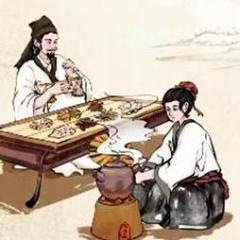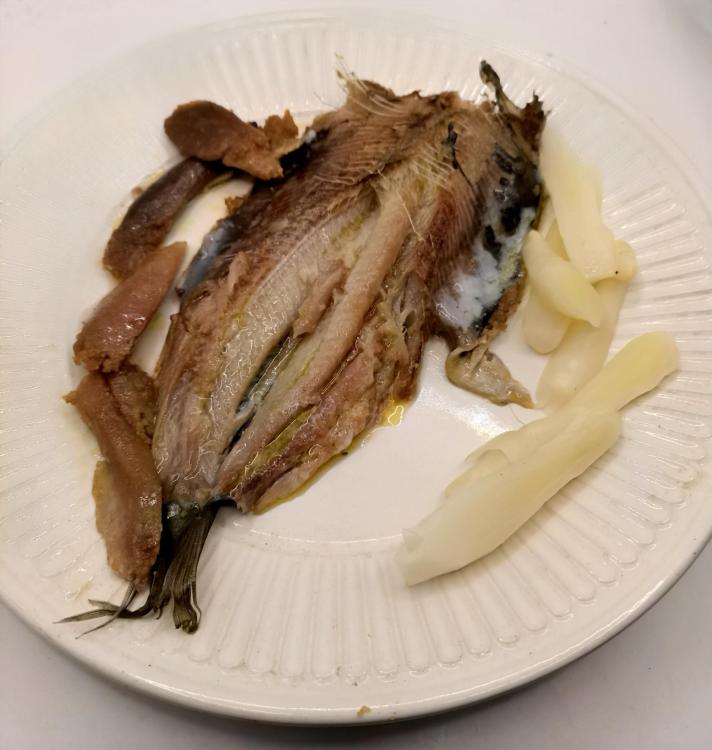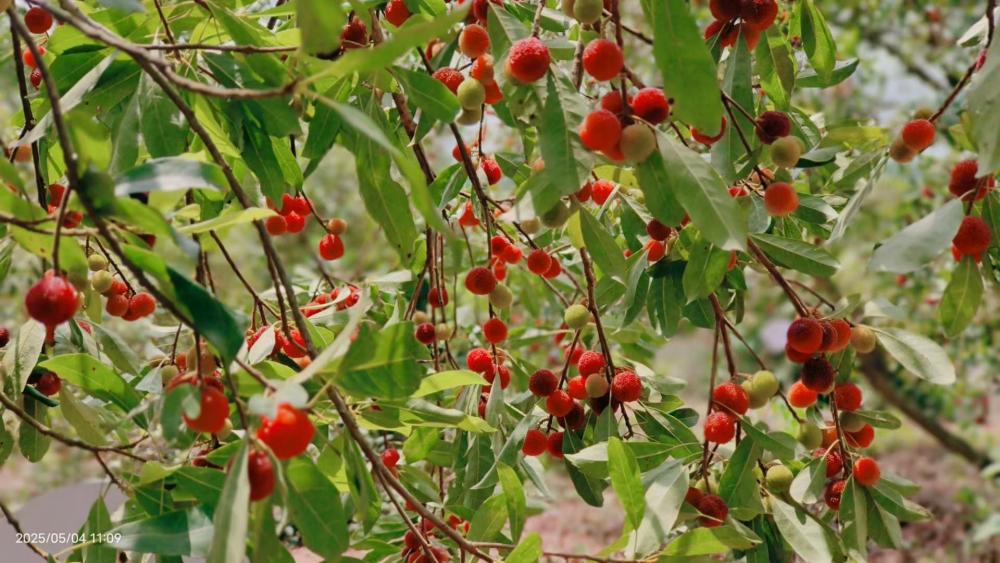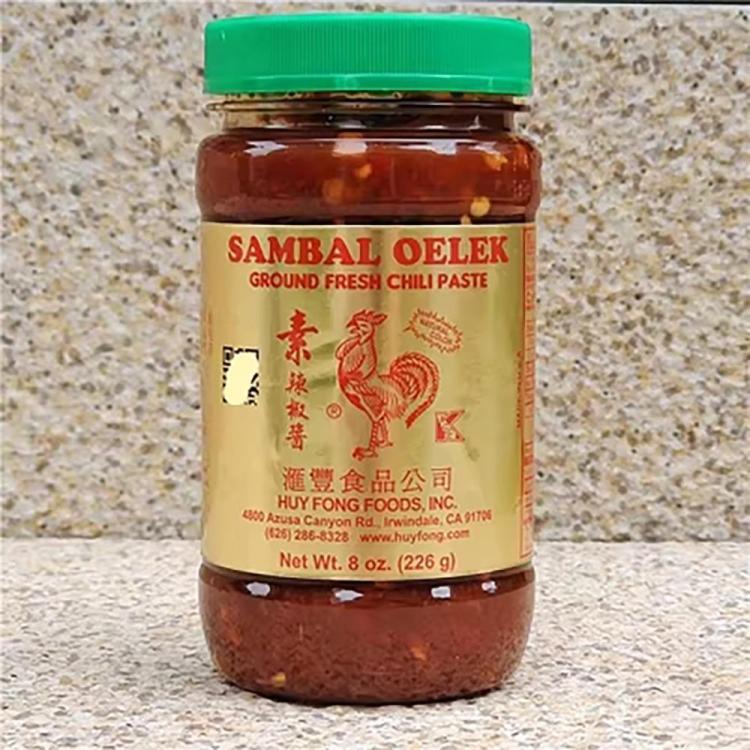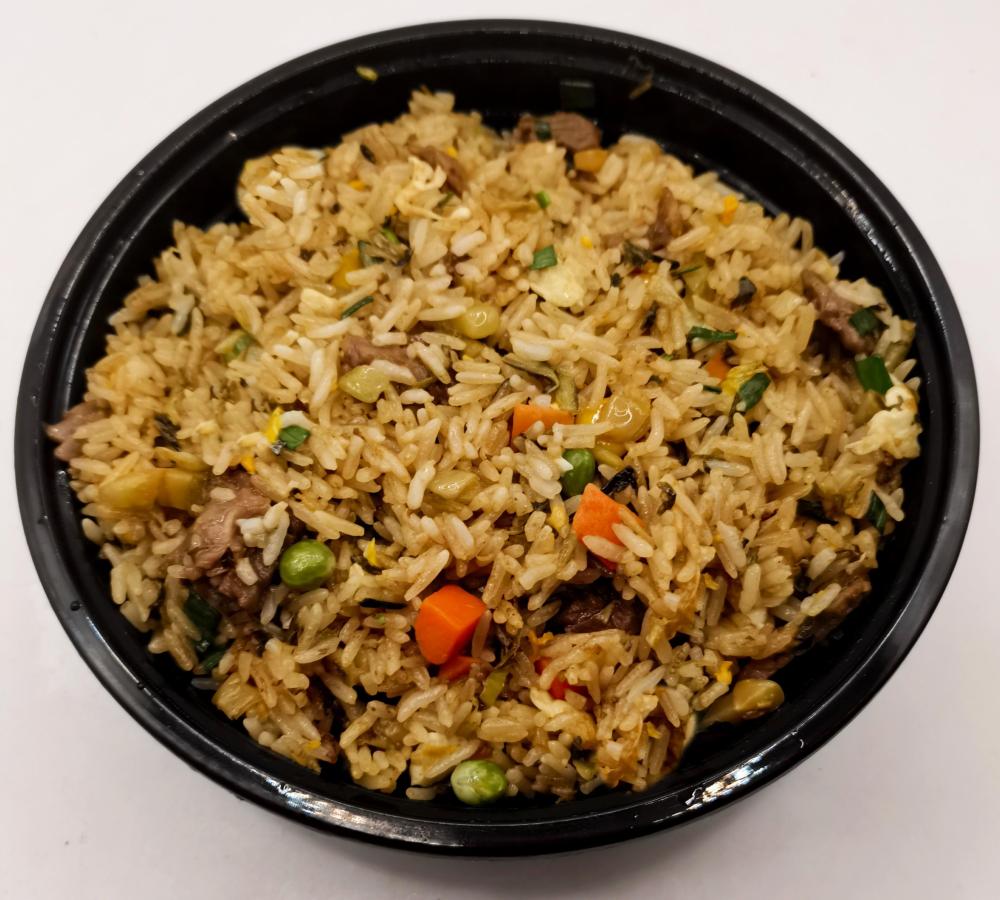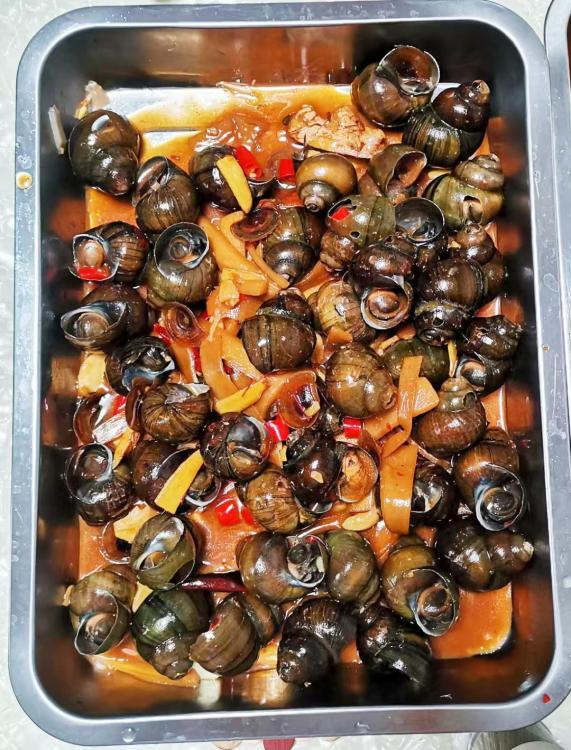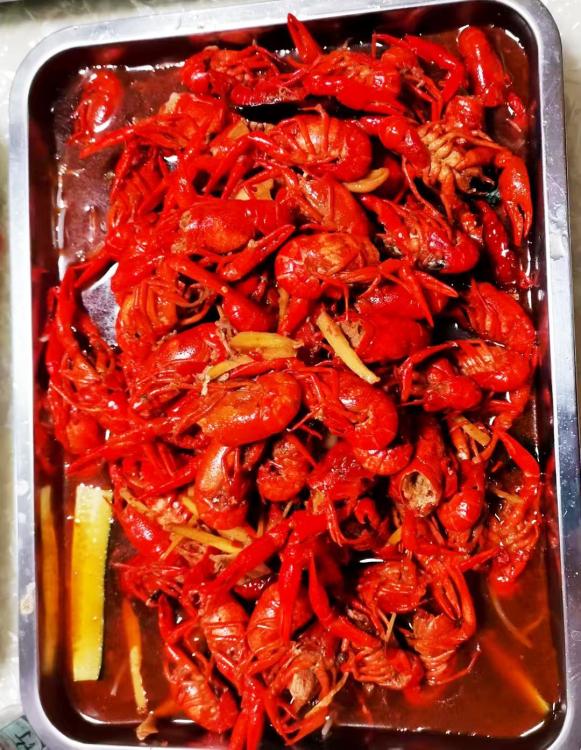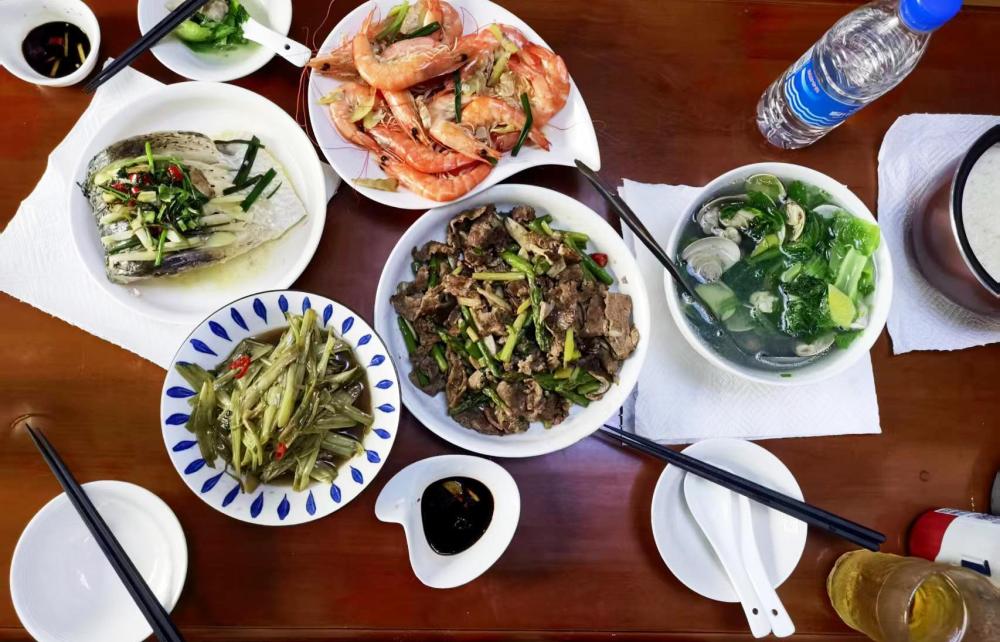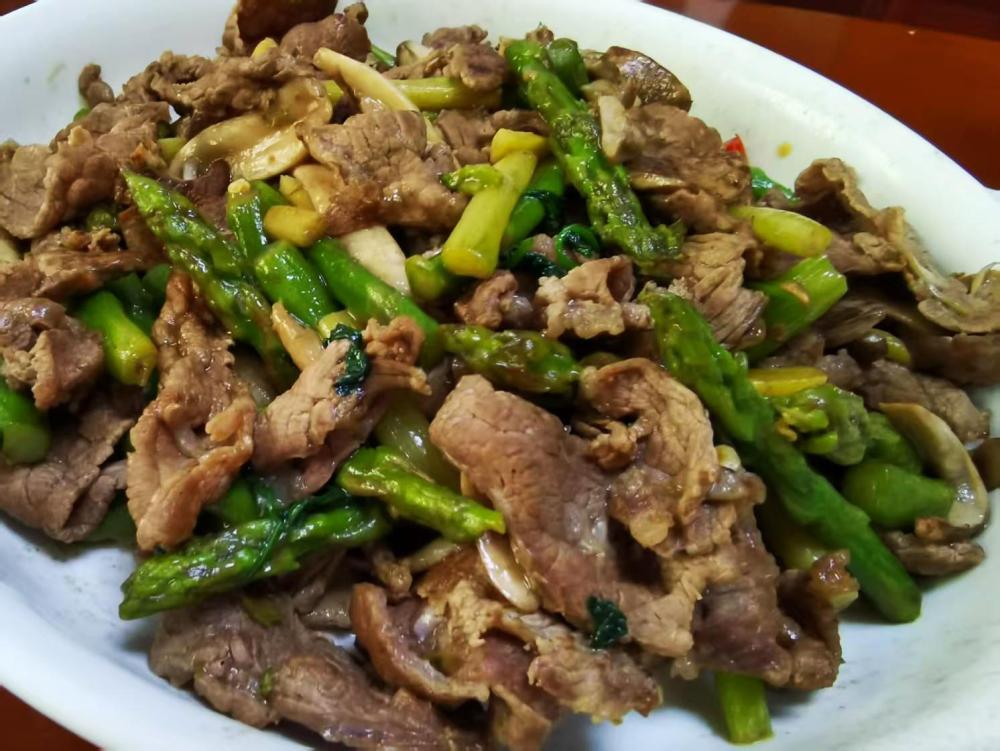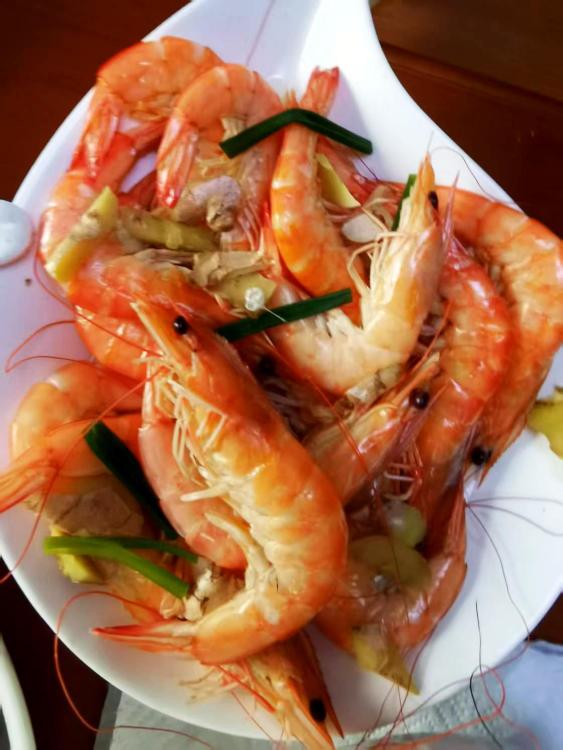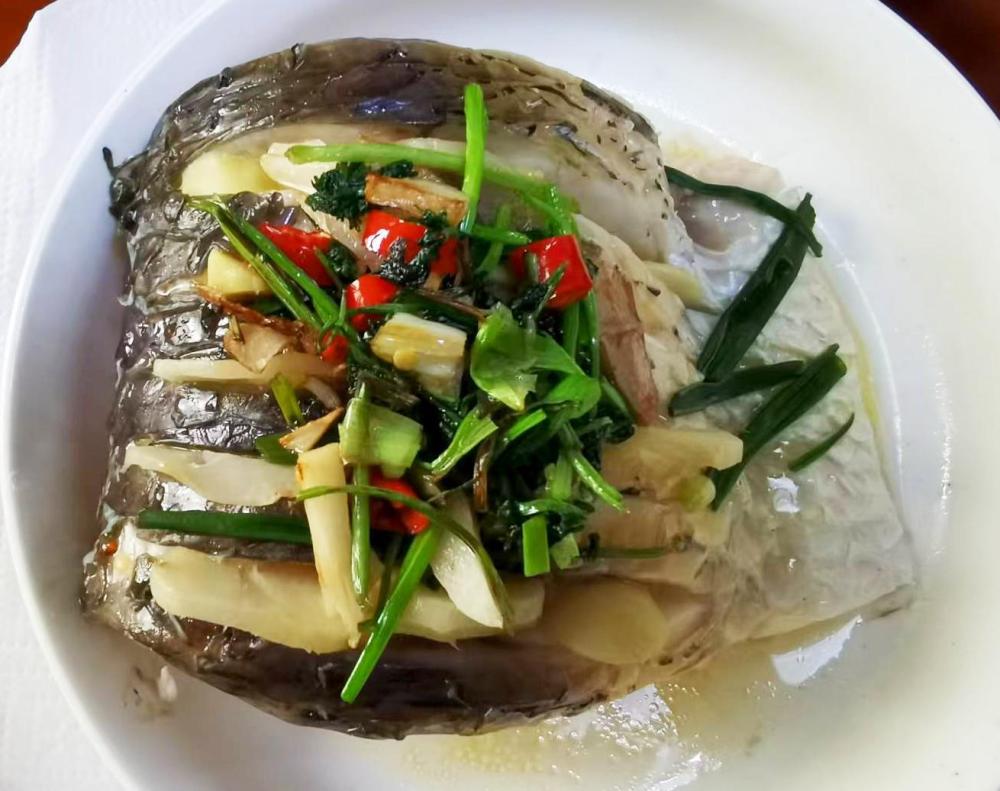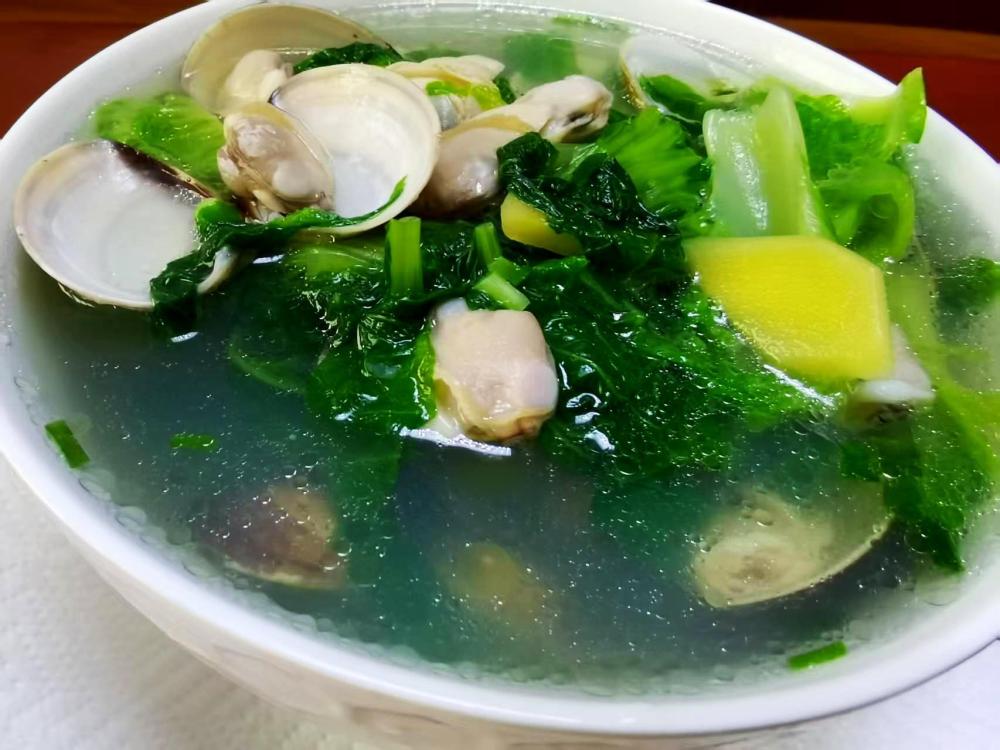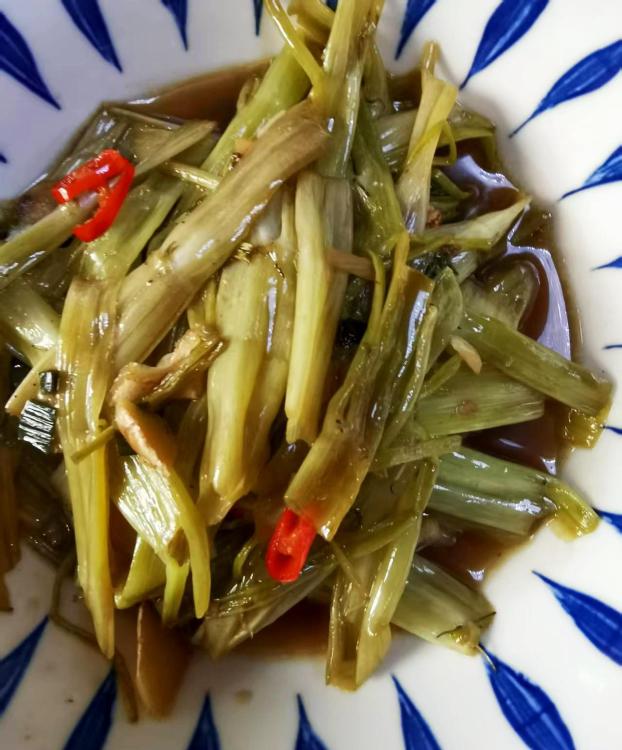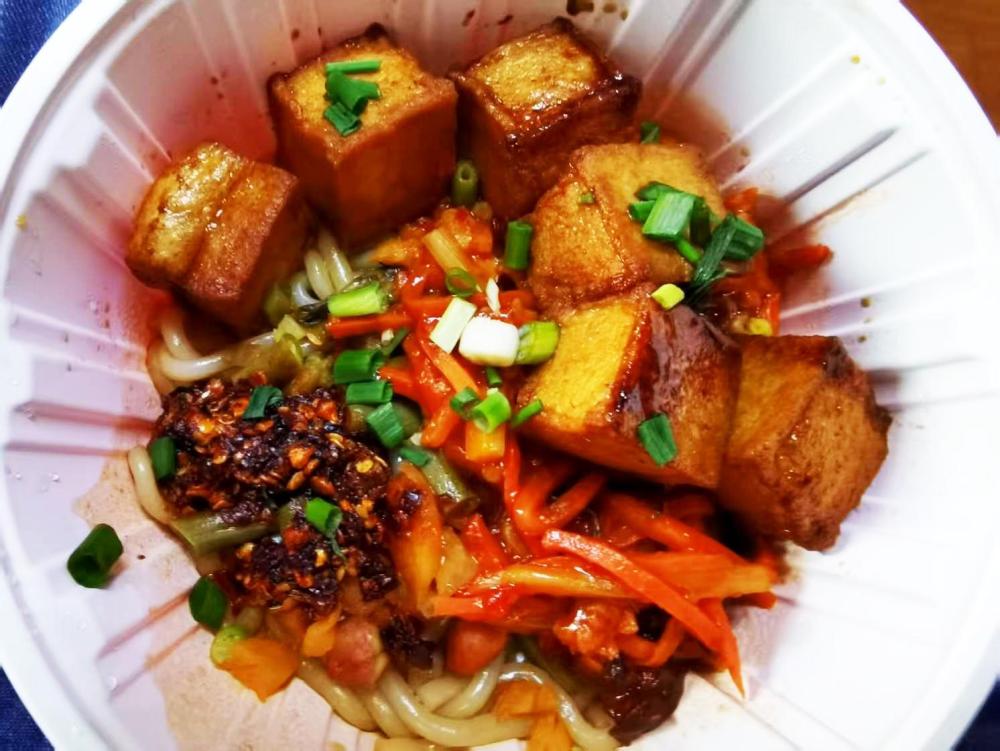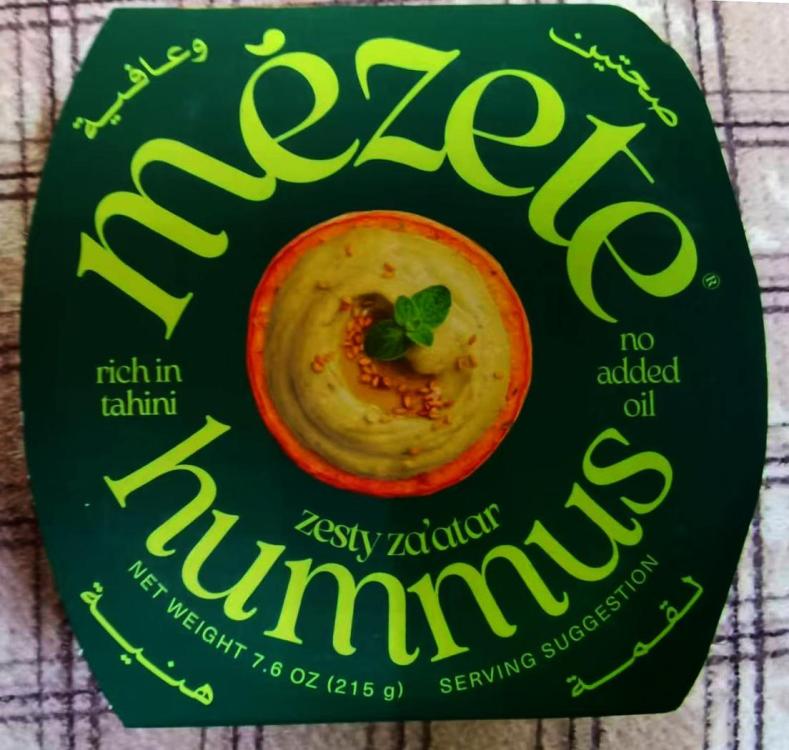-
Posts
16,725 -
Joined
-
Last visited
Content Type
Profiles
Forums
Store
Help Articles
Everything posted by liuzhou
-
-
This is 梅干菜 (méi gān cài), sometimes shortened to just the first two characters and is another type of preserved 芥菜 (jiè cài), leaf mustard, Brassica juncea. This time it goes through a more complex processing. The mustard plant is sun-dried before being salted and pressed by hand to remove all remaining moisture. It is ten re-salted and left to dry ferment for two to three weeks, As if that's not enough punishment, it then repeatedly steamed and re-dried until the preserving shamans are happy it's of the right colour and fragrance. It is important in Hakka cuisine and nearly always used to accompany pork. It is essential in a famous Hakka dish, 梅菜扣肉 (méi cài kòu ròu), which is a complicated dish of pork slices interleaved with the vegetable, although the Hakka here in Guangxi (and Guangxi's Zhuang) people prefer to use taro as the vegetable. component of the dish). Details of the Zhuang version are in this topic. The method is the same with the preserved mustard type. It often appears in Bao (steamed buns), again with pork but also on its own. Meigan and Pork Bao The bundle above cost me just over one dollar USD.
-
Not a pretty plateful by any means but great flavour. Smoked herring and its roe with pickled ginger. Served with sourdough and butter..
-
Damn! I had a brain fart. Although it's still not arbutus. It's not jujubes. It's 杨梅 (yáng méi), bayberry. Myrica rubra. My favourite fruit!!!
-
Yes. That is a common feature of several languages. In Mandarin 子 (zi) is added to many words to nominalize them. We do the same in English. For example we add -ness to adjectives to make words like laziness.
-
Not in any detail - just that it is used that way. I got the impression it's used more at home. yes. I'd ask but they are on a plane heading back to Jakarta right now.
-
Me neither.
-
Over this weeks’ 5 day public holiday, I met three of my ex-students from Jakarta who were revisiting their old overseas university here in Liuzhou. With their help, I think I got to the bottom of the sambal oelek controversy. They confirmed the name is Indonesian but in the old spelling introduced by the Dutch. In Modern Indonesian it is ‘ulek’ or ‘ulekan’. It refers to the pestle in the mortar and pestle combo. Cobek is the mortar and ulek is the pestle. It also refers to both the grinding action and the resulting ground stuff. It is basically chillies ground with salt. So chilli paste. The results are used in Indonesia as the basis for other sambals or in other dishes by itself. One student told me her grandmother was known as ’Mother Ulek’ in her village for her skills with the sambal making. Some industrial producers use the old spelling oelek in the same way many do with Chinese by using the outdated transliteration system which refers to what is known as gongbao chicken in China by the name kung po or similar in the west. American Sambal Oelek.
-
蓝莓 (lán méi), blueberries, Vaccinium angustifolium, native to North America but cultivated here in Yunnan Province, south China. Must admit I wouldn't mourn if I never saw another one. An alternative Chinese name is 午饭果 (wū fàn guǒ), literally 'black rice fruit', with 'rice' indicating 'small'. I've always thought this a more appropriate name. They aren't blue in my eyes.
-
Another day; another fried rice. 酸菜牛肉炒饭 (suān cài niú ròu chǎo fàn). Beef and Pickled Vegetable (Chinese sauerkraut) fried rice.
-
-
Slight correction to the above. Too late to edit. Sprats (Spratus Spratus) are related to herring, being members of the Clupeidae family, but a different genus. Their native range is shown in this image. AquaMaps (2019, October). Computer generated distribution maps for Sprattus sprattus (European sprat), with modelled year 2050 native range map based on IPCC RCP8.5 emissions scenario. Retrieved from https://www.aquamaps.org.
-
@Smithy We do get sprats here in China but imported, like yours from the Baltic region. Yours were Latvian as is this brand available here or from Russia. They are also often mislabelled as herring or even sardines. In fact the Chinese name for them 西鲱 (xī fēi), literally translates as 'Western herring'. The two species do inhabit the same waters but are unrelated. The same Chinese name is also sometimes used for yet another unrelated species, shad. Confusion reigns.
-
I was joking. Why do they have to point out a jar of fish contains fish?
-
-
I was shocked to see your jar of Baltic sprats contains fish!! 🐡
-
Yesterday was a public holiday, the first of five, if you count next weekend, as the Chinese do. However, today is the main day May 1st, the international Labour Day. Yesterday, two of the last students I taught before retiring came to visit. I have cooked for them in the past, but this time they wanted to cook for me to demonstrate they had learned something besides linguistics. Well, one of them wanted to cook; the other was assigned washing and chopping duties. She is now a PhD student and lives on campus in Guilin without cooking facilities. Here is last night’s dinner The Spread Beef, Asparagus and Matsutake Steamed Shrimp Steamed Grass Carp Clam, Pork and Greenery Soup This was morning glory but I have no idea how she cooked it. Unfortunately, it was inedible. It turned out she tasted it then salted it but thought it needed a little sugar to lift it - a common Chinese practice. Unfortunately, she thought a container of sea salt in my kitchen was actually the sugar and re-salted it in error. They were mystified as to why I have more than one kind of salt (I have four). So, they gained a lesson on saltistics. This caused more hilarity than grief and we had too much food anyway and everything else was more than fine! The chef
-
-
Not everywhere. Not always. It can be made from any fish. Or chicken. Even if made from wild caught fish, the final product is still a processed food and definitely not wild caught.
-
鱼香肉丝炒面 (yú xiāng ròu sī , fish-flavour* pork slivers with fried noodles, 老干妈 (lǎo gān mā), Laoganma chilli crisp and deep fried tofu. Simple nut tasty. *No aquatic animalia involved; it means cooked with flavours more often associated with cooking fish in Sichuan.
-
-
I've been confused. I have crabs. These are described as 青蟹 (qīng xiè) which tells me nothing. 青 (qīng) is one of those annoying Chinese characters with multiple meanings. Among yet more meanings it can mean blue, green or black. So these are crabs of some kind of colour. Digging around, I discover that the blue crabs I'm used to can actually come in any colour that takes their notion. So, this is a black green red blue crab. They are a type of 梭子蟹 (suō zi xiè) or swimming crab, a member of the Portunidae family. Which precise variety, I have no idea. Tasty, though
-
Oooops! 'Lebanon' is not the best way to spell 'Jordan' where the hummus really comes from. معذرة (maadhhera) as they say in Jordan and Lebanon!


